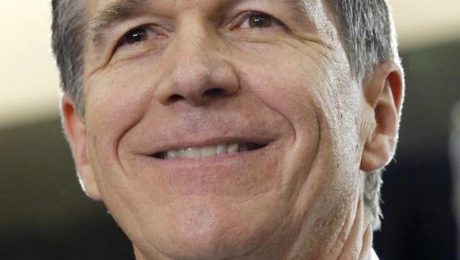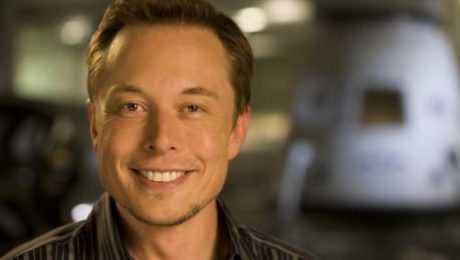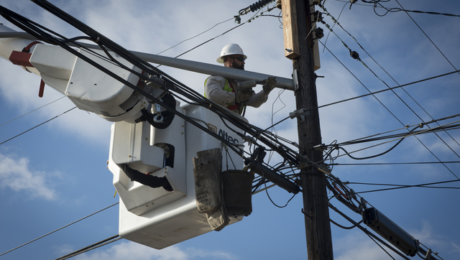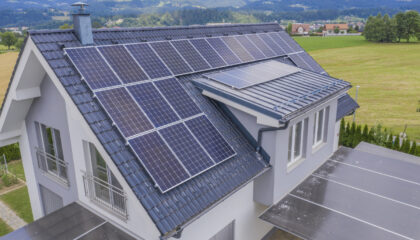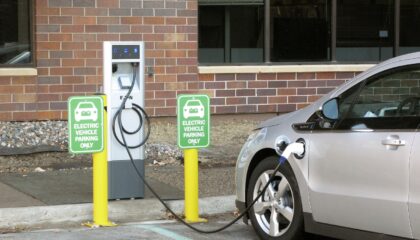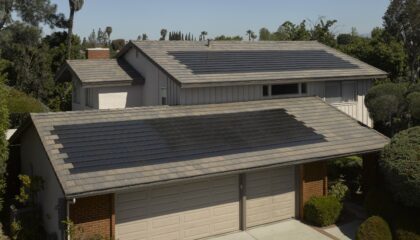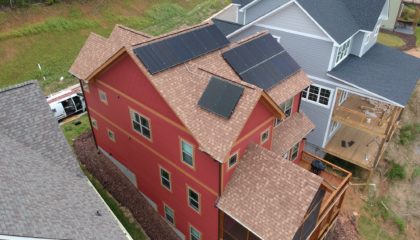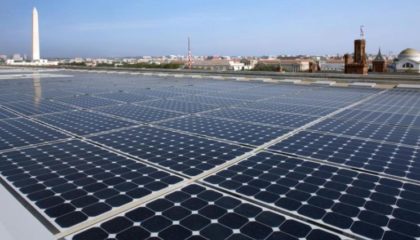States, Cities, and Organizations Pick Up Environmental Slack Left by Federal Government
As many know, this summer, President Trump announced that America would be pulling out of the Paris Accord. This caused quite the uproar, and in the months following the announcement, states and cities have made plans to achieve the Paris Accord’s goals.
What’s Been Done
Washington, New York, and California led efforts to create the U.S. Climate Alliance, a bipartisan coalition of state legislators and mayors in response to America’s. America’s Pledge, a group of states, cities, businesses, and universities, and We Are Still In, a declaration of supporting climate action, were also created to include private sector groups in the effort to combat climate change.
North Carolina joined the U.S. Climate Alliance and the We Are Still In campaign. Each state agreed to help make the goal of lowering emissions 26-28% of 2005 levels. States forming the Climate Alliance will probably reach that goal on an individual basis. However, America is on track to reduce emissions by only 15% by 2020 if federal emissions policy is rolled back as predicted.
Challenges
As uplifting as it is to see states, cities, and organizations come together to protect Earth, there are some downsides to not having the federal government participating in environmental policy. Significant amounts of research and development have been funded and supported by past federal initiatives. There are also possible strategies to lowering emissions no longer available because federal policies are necessary to achieve them. For instance, a national grid would mean that extra solar generated in California on a sunny day could be sent to a rainy Washington. Such a strategy could help make America’s electricity completely renewable, but a completely national grid could not exist without federal policy assisting states.
Though the U.S. Climate Alliance and America’s Pledge may not be able to do everything the entire federal government could do, such groups make sure that there are still parties invested in fighting climate change. Such interest will keep innovation alive, and progress will continue. By the time 2020 rolls around, who knows how many parties, private and public, will have recommitted to the Paris Accord. It may turn out federal involvement is not a necessity at all.
- Published in Solar News
Tesla Owner Putting His Money Where His Batteries Are
Microgrids are starting to come into their own, and Tesla Owner Elon Musk is drawing attention by claiming storage can fix energy problems around the globe.

Ta’u Island is 100% solar thanks to Tesla storage batteries.
Microgrids helped small islands like Ta’u of American Samoa go completely solar. Off North Carolina’s coast, Ocracoke’s grid security was increased by a small solar microgrid. It will keep the island running along with a small diesel generator the island has had if the single transmission line from the mainland to the island is disrupted. Hawaiian island Kauai also discovered the beauty of microgrids with a solar+storage system, the island was able to go off fossil fuels altogether.
Islands are so interested in microgrids because shipping fossil fuels makes energy production more expensive than it is on continental America or other mainland countries. Many islands have jumped on the bandwagon, reducing or erasing fossil fuel use for each island.
Tesla started the year by increasing production of the new storage batteries, causing the prices to drop more than they already were. As microgrids have become more affordable, they have become a viable option for communities and municipalities.
With his factory pumping out batteries, Musk is making sure people know his product can do what fossil fuel energy plants cannot. In March, he told Australia his batteries could solve the rolling blackout issues in South Australia after a gas shortage and storms disrupting transmission and closing wind farms and power plants in 100 days. Australia took Musk up on his bet, and Tesla is currently ahead of schedule on the 100 day deadline.
Musk was so confident in part because Tesla had built a smaller battery storage system for California in three months in late 2016.
Tesla is not the only one bringing renewables to places in need. Australian company ZEN Energy proposed another project for Australia when rolling blackouts hit a city after a heatwave. Several companies and wealthy environmentalists have been making sure islands have a variety of energy options.
Plans for microgrids are being put into place for facilities like correctional facilities and hospitals where backup for power outages are vital. Microgrids are currently being set up in Puerto Rico to put hospitals back in business.
Beyond relief, Musk, in response to a tweet, claimed Tesla solar+storage systems could be the answer for Puerto Rico as the territory recovers and decides how to increase its grid security. The governor seemed to like the idea, so who knows what is in store for solar and microgrids in the upcoming year. As long as Tesla and other solar companies rise to solve energy crises, there will be evidence that solar can do what fossil fuels cannot.
- Published in Solar News, Solar Technology
SolFarm Employee Highlight: Edward Wright
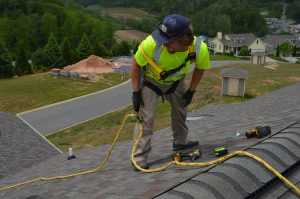 This week at SolFarm Solar, we are highlighting one of our newer staff members, Edward Wright. Having been born in the UK, Ed came to the United States as a boy. He graduated from Appalachian State University with the appropriate technical degree and began an internship with SolFarm Solar. Later accepting a professional position with SolFarm as a Solar Installer, you are sure to see him on top of SolFarm roof-tops and at SolFarm Events. When asked about his passions, he states, “My passion is bringing innovative renewable energy technologies to our communities as well as communities in developing nations. I love soccer (football), disc golf, and stomping my feet to some good live music! Especially bluegrass!”
This week at SolFarm Solar, we are highlighting one of our newer staff members, Edward Wright. Having been born in the UK, Ed came to the United States as a boy. He graduated from Appalachian State University with the appropriate technical degree and began an internship with SolFarm Solar. Later accepting a professional position with SolFarm as a Solar Installer, you are sure to see him on top of SolFarm roof-tops and at SolFarm Events. When asked about his passions, he states, “My passion is bringing innovative renewable energy technologies to our communities as well as communities in developing nations. I love soccer (football), disc golf, and stomping my feet to some good live music! Especially bluegrass!”
Ed has traveled to Costa Rica twice and once to Nicaragua to install several small off grid PV battery systems for rural homes and organic coffee farms. “These systems were for families who were unable to afford grid power or the power company was unwilling to bring grid power to those locations.” Ed also has experience servicing existing projects such as, wood-fired rocket stove hot water heaters, micro hydro electrical systems, permitting and solar design. Ed is a welcomed and loved member of the SolFarm team. You too will be able to catch up with him at the next SolFarm event or at your personal solar install.
- Published in Solar News
Harvey, Irma, and Maria Have a Silver Lining for Solar
While the barrage of hurricanes destroyed homes and lives, there may be a silver lining on the horizon.
In the face of ruined energy municipalities, affected states and territories have a choice to make: repair or rebuild.There is a chance Texas, Florida, or Puerto Rico could follow the path New York took after Sandy. New York created a plan to increase grid resiliency through microgrids and production diversity.
Why There Should Be a Change
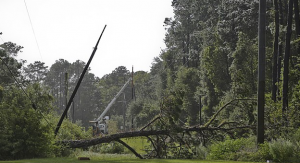
Powerlines down in Florida after Hurricane Irma
Texas and Puerto Rico were vulnerable because utilities produced energy far from consumers, and long transmission lines were outdated. Poles were easily knocked down, and once they were consumers were cut off from energy. Florida had modernized or ‘hardened’ almost half of their transmission wires, but still suffered crippling outages for days. Where the poles were hardened or transmission wires buried underground, transmission was largely protected.
What’s Being Done Now
After Irma, Florida decided to analyze their municipal energy systems, but it seems they are putting their trust in hardening the system, sending funds and effort in that direction while the analysis takes place. Texas gives counties and towns a lot of freedom, so local government will decide whether to invest in microgrids and diversity or system hardening.
Puerto Rico’s biggest concern is just getting the lights back on. Weeks after Maria, Puerto Rico is rebuilding and will be for months. Their government owned utilities will be privatized. After that, Puerto Rico will have options about how to make sure a disaster on the scale of Maria never happens again. With their grid decimated, they will have room to completely change and upgrade, but with the Puerto Rican utility’s debt and the severity of the outages, they may just replace what they had to begin with.
Relief efforts in Puerto Rico include solar and batteries with solar companies and associations donating resources to make sure that necessities and as many families as possible have power while the utility system is being rebuilt.
Why Microgrids Are Viable Solutions
They are already being used. If microgrids can be successfully used in relief situations and on an individual basis, they can be used on large scale too. Tesla and other solar companies have even said they are ready to meet the challenge, and the governor of Puerto Rico has seemed receptive.
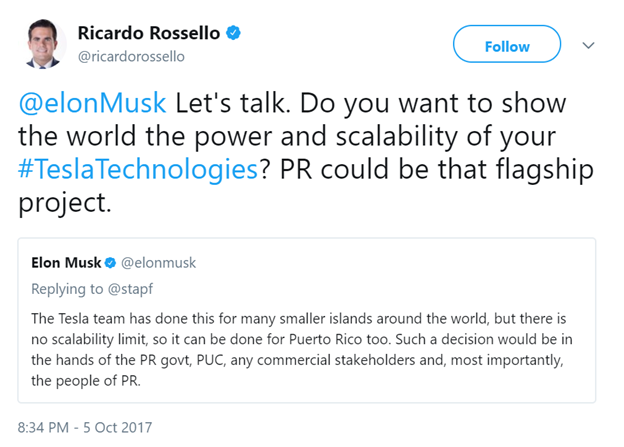
In the face of another natural disaster, a microgrid would mean a town would not be powerless even if a powerline in a large transmission system gets knocked down. One of the beauties of a microgrid is that it is local. For a regulation system like Texas’ where towns and counties have control of municipalities, microgrids could be perfect backup for outages due to transmission or even generation difficulties of large-scale utilities.
Finally, diversifying energy production means the pressure on large power plants to produce all the power for an area is lessened. If something happens to that plant or if the power it is producing is not enough, other energy sources will be there to make sure the lights do not go off.
- Published in Solar News

